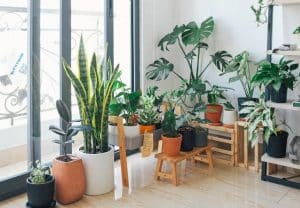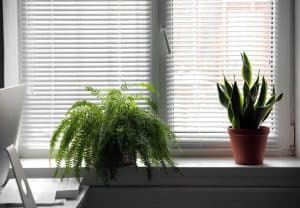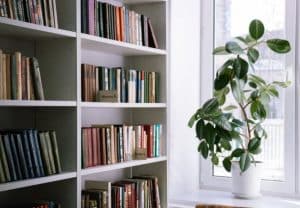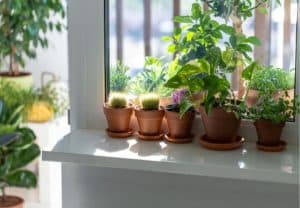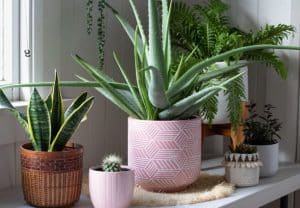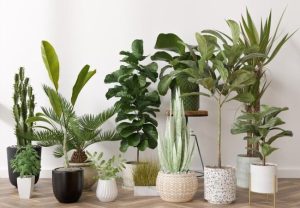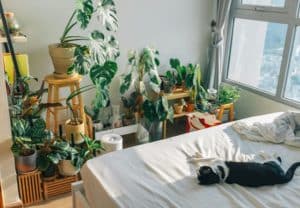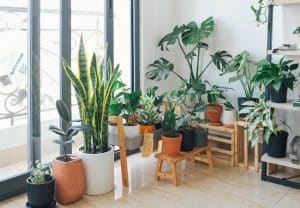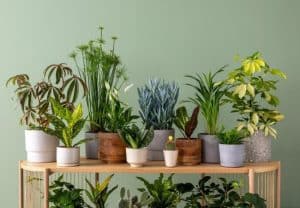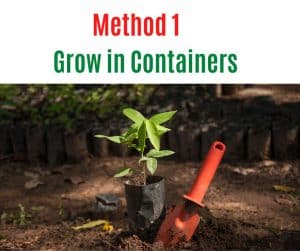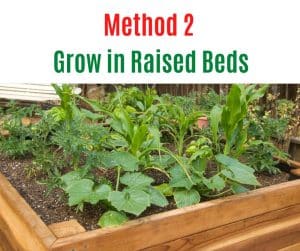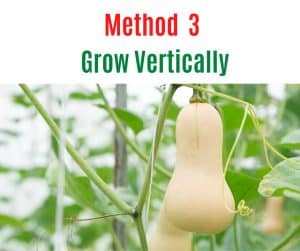Butternut squash is a versatile and nutritious vegetable that can be used in a variety of dishes, from soups and stews to salads and roasted vegetables. However, to get the most out of your butternut squash, it’s important to know how to store it properly.
In this article, we’ll share essential technique for storing harvested butternut squash to prolong its shelf life, preserve its nutritional value, and ensure that it stays fresh and flavorful for as long as possible. Before that, you will get to know about ideal storage conditions and location for butternut squash.
Let’s explore everything about how to store butternut squash.
Ideal storage conditions for butternut squash
The ideal storage conditions for butternut squash are cool, dry, and dark. Here are some specific recommendations for storing butternut squash:
-
Temperature
The temperature for storing butternut squash should be between 50 to 55 degrees Fahrenheit (10 to 13 degrees Celsius). Temperatures that are too cold or too warm can cause the squash to spoil or deteriorate more quickly.
-
Humidity
The ideal humidity level for storing butternut squash is around 50-70%. High humidity can cause the squash to rot or mold, while low humidity can cause it to dry out and lose flavor. Therefore, it is important to store butternut squash in a location that has moderate humidity levels. If you are storing the squash in a dry environment, you can place a damp cloth or paper towel nearby to help maintain the humidity level. Conversely, if the environment is too humid, you can use a dehumidifier to reduce the moisture in the air. By maintaining the right humidity level, you can help to extend the shelf life of butternut squash and preserve its quality and flavor.

-
Ventilation
Ventilation plays an important role in storing butternut squash as it helps to prevent the build-up of moisture and mold. Good air circulation allows any excess moisture to evaporate and helps to maintain a moderate humidity level. Without proper ventilation, the environment can become too humid, which can cause the squash to rot or mold.
-
Darkness
Butternut squash should be stored in a dark place to prevent it from being exposed to light. It is important to note that even a small amount of light exposure can cause damage to butternut squash over time. Exposure to light can cause butternut squash to break down and lose its nutritional value, as well as cause the skin to harden or become discolored.
-
Separation
Store butternut squash separately from other fruits and vegetables. Fruits such as apples, bananas, and pears produce ethylene gas, which can cause the squash to ripen and spoil more quickly.
By following these ideal storage conditions, you can extend the shelf life of butternut squash and ensure that it stays fresh and flavorful for several months.
Finding ideal storage location for butternut squash
Butternut squash can be stored in several different places, as long as the conditions are cool, dry, and dark. Here are some examples of suitable storage locations for butternut squash:
- If your pantry is cool and dry, it can be an excellent place to store butternut squash. However, make sure that it’s not too close to any sources of heat or moisture.
- A root cellar is a traditional storage area that is perfect for storing root vegetables like butternut squash. It’s a cool, dark, and humid environment that can help keep your squash fresh for several months.
- If you have a basement that is cool and dry, it can be a good place to store butternut squash. However, make sure that it’s not too damp, as excess moisture can cause the squash to rot.
- If you have a garage that is insulated and stays cool, it can be an ideal place to store butternut squash. However, make sure that it’s not too humid or subject to extreme temperature fluctuations.
Remember to store your butternut squash in a single layer and avoid stacking them to prevent bruising and rot. Also, avoid storing them near fruits that release ethylene gas, such as apples or bananas, as this can cause the squash to ripen and spoil more quickly.
How to store butternut squash?
After getting storage conditions and perfect location, you are at the final step of how to store butternut squash. Here is step by step procedure:

Step 1 – Clean the squash
To clean butternut squash for storage, follow these steps:
- Rinse the squash under cool, running water to remove any dirt or debris from the surface.
- Use a clean vegetable brush to scrub the surface of the squash gently to remove any remaining dirt or debris.
- Dry the squash with a clean towel or allow it to air dry completely before storing.
It’s important to ensure that the squash is completely dry before storing, as any moisture can promote the growth of mold and cause the squash to spoil more quickly. Once the squash is clean and dry, you can proceed with the curing and storage process as described earlier.
Step 2 – Cure the squash
Curing is the process of allowing the butternut squash to dry and harden before storing it. It develops a tough outer layer that protects squashes from moisture and bacteria, preventing it from spoiling quickly and prolongs shelf life.
Here are some benefits of curing butternut squash before directly storing:
- Curing helps to dry out the outer layer of the squash, creating a protective barrier that prevents moisture from entering and bacteria from growing. As a result, cured butternut squash can last for several months in storage.
- Curing can enhance the natural sweetness of butternut squash and produce a nuttier flavor. It also helps to firm up the flesh, making it easier to cut and cook.
- Curing can help to preserve the nutritional content of butternut squash by slowing down the degradation of its vitamins and minerals.
- Cured butternut squash can be used in a wide range of recipes, from soups and stews to roasted vegetables and side dishes.
To cure butternut squash, it should be left in a warm, dry place with good ventilation for about 7-14 days, depending on the size and thickness of the squash. After curing, the squash can be stored in a cool, dry, and dark place for several months.
Step 3 – Storing at the right place
Choose a cool, dry, and dark location to store butternut squash as directed in the first section.
Do not stack the squash on top of each other, as this can lead to bruising and spoilage. Instead, place the squash in a single layer on a shelf or in a basket, with space between each squash to allow for air circulation.
Another option is to wrap squashes for storing. It’s not necessary, but doing so can provide an extra layer of protection against moisture and pests. If you choose to wrap the squash, use a breathable material such as paper or a loosely woven cloth. This allows for air circulation and prevents the squash from sweating and developing moisture, which can lead to mold growth and spoilage.
Perforated plastic bags also work fine. This allows for air circulation while also providing a barrier against moisture and pests.
Whether you choose to wrap the squash or not, make sure to store it in a cool, dry, and well-ventilated location with a temperature between 50-55°F and a humidity level between 50-70%.
Post storage checking of butternut squash

Here are some tips for checking, caring, and maintaining stored butternut squash to prevent spoilage and decay:
- Regularly inspect the squash for any signs of damage or decay, such as soft spots, mold, or discoloration. Remove any damaged or spoiled squash immediately to prevent the spread of decay.
- Handle the squash gently to avoid causing any bruises or cuts that can lead to spoilage.
- Maintain the storage area at the optimal temperature and humidity levels, as described earlier.
- Check the squash periodically to ensure that it’s still in good condition. If you notice any signs of decay or spoilage, remove the affected squash immediately.
- If you wrapped the squash in paper or cloth, check it periodically to ensure that it’s still breathable and not trapping moisture inside.
- Avoid stacking the squash too high or too tightly, as this can cause the squash to become crushed and bruised, leading to spoilage.
- If you notice any pests in the storage area, take steps to eliminate them immediately to prevent them from damaging the squash.
- Consider using natural pest control methods, such as diatomaceous earth or essential oils, to discourage pests.
By following these tips, you can help ensure that your stored butternut squash stays fresh and flavorful for as long as possible.
How to check for signs of decay or spoilage?
There are several signs that you can look for to check if your stored butternut squash has started to decay or spoil:
- Appearance: Check for any visible mold or discoloration on the surface of the butternut squash. If you notice any soft spots or sunken areas, it may indicate that the squash has started to rot.
- Smell: Give the butternut squash a sniff. If you detect any sour, musty, or unpleasant odors, it may indicate that the squash is spoiled.
- Texture: Press your finger gently on the surface of the butternut squash. If it feels soft or mushy, it may have started to decay.
- Taste: If you’re unsure about the quality of your butternut squash, you can cut off a small piece and taste it. If it tastes off or has a strange texture, it’s best to discard the squash.
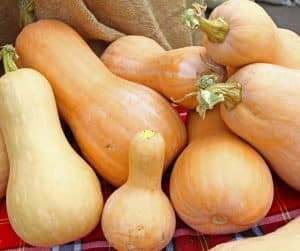
It’s important to store butternut squash in a cool, dry place, away from direct sunlight or sources of heat. If you notice any signs of decay or spoilage, it’s best to discard the squash to avoid the risk of foodborne illness.
Freezing butternut squash
Freezing harvested butternut squash is important because it helps to preserve its nutritional value and flavor for longer periods of time. Freezing can also save you time and money by allowing you to store excess squash and use it when needed. Here are the steps to freeze harvested butternut squash:
- Prepare the butternut squash: Wash the squash thoroughly and cut off the ends. Cut the squash in half lengthwise and scoop out the seeds with a spoon.
- Cut the squash into small pieces: Use a sharp knife to cut the squash into cubes or slices of the desired size.
- Blanch the squash: Blanching helps to stop enzyme activity that can cause the squash to lose flavor and nutrients. Bring a large pot of water to a boil and add the squash. Boil for 2-3 minutes, then immediately transfer the squash to a bowl of ice water to stop the cooking process.
- Drain and pat dry: Drain the squash and pat it dry with paper towels to remove any excess moisture.
- Pack the squash into freezer bags: Label freezer bags with the date and contents. Pack the cooled squash into the bags, leaving some room at the top for expansion during freezing. Remove as much air as possible from the bags before sealing them.
- Freeze the squash: Place the bags of squash in the freezer and freeze for up to 8-10 months.
To use the frozen squash, simply remove the desired amount from the freezer and thaw it in the refrigerator or microwave before using it in your recipe.
Can butternut squash be canned?
Yes, butternut squash can be canned, but it’s important to follow specific guidelines to ensure that it’s done safely. The USDA recommends using a pressure canner to can butternut squash, as it’s a low-acid vegetable that can harbor bacteria such as Clostridium botulinum, which can cause botulism.
To can butternut squash safely, start by peeling and cubing the squash, then blanch it in boiling water for two minutes. Pack the hot squash into clean, sterilized canning jars, leaving about an inch of headspace at the top. Add hot water or vegetable broth to cover the squash, then wipe the rim of the jar clean and place a lid and ring on top.
Process the jars in a pressure canner according to the manufacturer’s instructions, taking care to maintain the recommended pressure and processing time. After processing, let the jars cool for several hours before checking the seals and storing them in a cool, dry place.
What is the ideal storage life of butternut squash?
The storage life of butternut squash depends on several factors, including how it was harvested, cured, and stored. Generally, properly cured and stored butternut squash can last for several months, up to 3-4 months, if stored in optimal conditions. However, the squash may begin to deteriorate or spoil earlier if it was not harvested or cured properly, or if it is stored in unfavorable conditions such as high humidity or temperatures. It’s important to regularly check the squash for signs of spoilage and discard any that show signs of deterioration.
Top 5 reasons of storing butternut squash
Storing butternut squash properly can provide several benefits, including:
- Properly stored butternut squash can last for several weeks or even months, depending on the storage conditions. This can be particularly useful if you have a large harvest or want to buy in bulk during the peak season.
- Butternut squash is rich in essential vitamins, minerals, and antioxidants, and storing it properly can help to preserve these nutrients for longer periods of time.
- Butternut squash is a versatile vegetable that can be used in a variety of dishes, including soups, stews, curries, casseroles, and roasted vegetables. By storing it properly, you can have this nutritious ingredient on hand whenever you need it.
- Storing butternut squash can be a cost-effective way to enjoy this nutritious vegetable throughout the year, particularly if you’re able to buy it in bulk or at a discounted price.
- By storing butternut squash, you can reduce food waste and make the most of your harvest or grocery store purchases, which is a more sustainable approach to food consumption.
Overall, storing butternut squash properly can provide several benefits, including prolonging its shelf life, preserving its nutritional value, increasing its versatility, saving money, and promoting sustainability.
Conclusion – How to store butternut squash?
In conclusion, storing butternut squash properly is essential to prolong its shelf life, preserve its nutritional value, and prevent food waste. By following simple storage techniques, such as choosing the right squash, storing it in a cool and dry place, and checking for signs of spoilage, you can enjoy this delicious and nutritious vegetable for several weeks or even months. Additionally, freezing or canning butternut squash can be a great way to store it for even longer periods of time. By taking the time to properly store your butternut squash, you can ensure that it stays fresh, flavorful, and healthy, providing you with a versatile and cost-effective ingredient for a wide variety of dishes.
Hope your query about how to grow butternut squash is answered to the fullest. Do share your valuable experience or any tips worth sharing.
